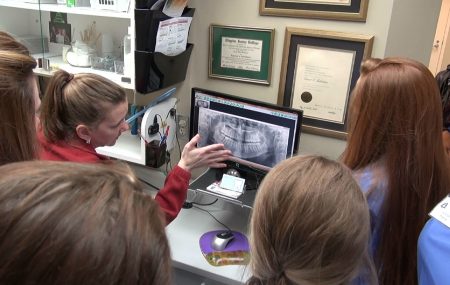
The Role of Technology in Modern Dental Assisting
Author: Dr. Casey Hart
In today’s fast-paced dental field, technology is revolutionizing the way care is delivered — and dental assistants are at the center of this transformation. From digital impressions to AI-powered scheduling tools, modern dental assistants play a crucial role in implementing and managing the technology that keeps a practice running efficiently and patients receiving the highest standard of care.
1. Digital Imaging and Radiography
Gone are the days of traditional film X-rays. Digital radiography has become the norm, offering faster image processing, reduced radiation exposure, and immediate access to high-resolution images. Dental assistants are often the first to take and process these images, requiring a deep understanding of both the technology and patient comfort.
2. Intraoral Scanners and CAD/CAM Systems
Intraoral scanners have replaced messy impression materials for many procedures. These high-tech tools allow assistants to capture precise 3D images of a patient’s teeth in real time. Coupled with CAD/CAM systems, dental assistants can assist in creating same-day crowns, bridges, and other restorations, improving efficiency and patient satisfaction.
3. Electronic Health Records (EHR)
Managing patient records has become more sophisticated with the use of electronic health record systems. Dental assistants use EHR software daily to input treatment notes, update medical histories, and coordinate care. This ensures better communication across the dental team and helps maintain accurate, accessible patient data.
4. Laser and Digital Dentistry Tools
Assistants are increasingly involved in procedures using dental lasers for soft-tissue treatments, cavity detection, and teeth whitening. Mastering the operation and maintenance of these tools is becoming an essential part of the modern assistant’s skillset.
5. Practice Management Software
Efficient scheduling, billing, insurance coordination, and inventory management are often handled through practice management software like Dentrix, Eaglesoft, or Open Dental. Dental assistants with strong software proficiency help keep the front and back offices synchronized, reducing errors and improving the patient experience.
6. Teledentistry and Patient Communication Tools
With the rise of teledentistry, dental assistants are helping to facilitate virtual consultations, triaging patient concerns, and ensuring smooth communication between providers and patients. Familiarity with communication platforms and secure data sharing has become increasingly important.
Preparing for the Future
As dental technology continues to evolve, so too must the skills of dental assistants. Training programs like those offered at Southeast Dental Careers Institute are adapting their curriculum to ensure students graduate with hands-on experience in the latest tools and techniques.
Final Thoughts
Technology is not replacing the dental assistant — it’s elevating the role. Today’s assistants are expected to be tech-savvy, detail-oriented, and capable of adapting quickly to new tools. For those entering the field, this represents an exciting opportunity to build a rewarding career at the forefront of modern dentistry.
Ready to start your journey in a high-tech dental career? Learn more about our Dental Assisting Program.
